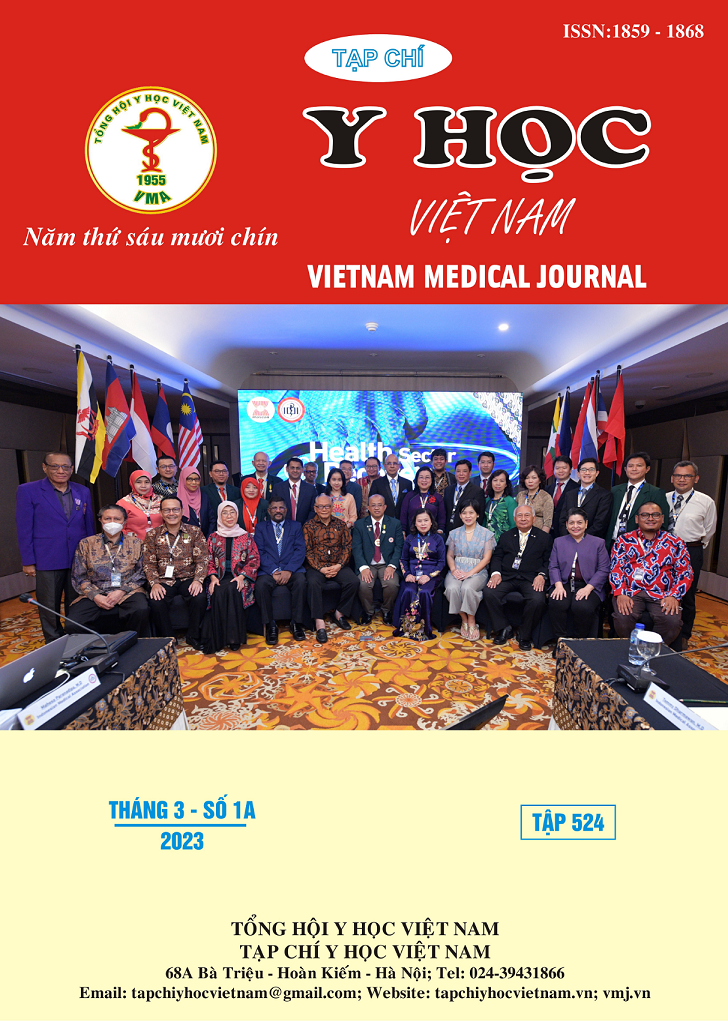COMMENTING THE QUALITY OF LIFE OF PATIENTS AFTER TOTAL HIP REPLACEMENT BY EQ-5D QUESTIONS AT THE ORTHOPEDIC AND SPINE DEPARTMENT OF BACH MAI HOSPITAL
Main Article Content
Abstract
Objective: To evaluate the change in quality of life of patients after hip replacement surgery using the EQ-5D questionnaires. Method: A cross-sectional descriptive study was carried out on 42 patients according to a homogeneous research sample. Results: The patient's overall quality of life score changed significantly after surgery with an increasing trend and statistically significant with p<0.05 at 1 month after surgery (0,722 ± 0,03), 3 months (0,850 ± 0,03) compared to the time before surgery (0,341± 0,04) and our study did not find a relationship between the increase in quality-of-life score after surgery with factors such as gender, age, cause of joint replacement. and with or without underlying disease with p>0,05. Conclusion: The quality of life of patients after hip replacement surgery tends to increase gradually over time.
Article Details
Keywords
Quality of life, hip replacement surgery, EQ5D score.
References
2. Hon-Yi Shi, Herng-Chia Chiu, Je-Ken Chang. (2006). Assess and predict health-related quality of life of hip replacement between Chinese in Taiwan. Int Orthop.32 (1), 27-32.
3. Hà Thị Kim Cúc; Châu Thị Kim Yến; Nguyễn Thị Vân; Lê Thị Lành. (2020). Đánh giá chất lượng cuộc sống của người bệnh lớn tuổi gãy liên mấu chuyển xương đùi sau phẫu thuật kết hợp xương bằng nẹp khóa tại bệnh viện TW Huế. Tạp chí Y học lâm sàng. 63, 61-66.
4. Aprato A, Masse A, Caranzano F. (2011). Patient-Perceived Quality of Life after Total Hip Arthroplasty: Elective versus Traumatological Surgery. Academic Journal.
5. Chiu HC, Mau LW, Hsu YC (2001). Postoperative 6-month and 1-year evaluation of health-related quality of life in total hip replacement patients. J Formos Med Assoc. 100(7), 461-465.
6. Mahomed N, Gandhi R, Daltroy L, et al. (2011). The Self-Administered Patient Satisfaction Scale for Primary Hip and Knee Arthroplasty. Arthritis.2011, 1-6.
7. M. Ostendorf, H. F. van Stel, E. Buskens, et al. (2004). Patient-reported outcome in total hip replacement. J Bone Joint Surg [Br]. 86-B(6), 801-808.
8. Veljko Santic, Dalen Legovié, Branko Sestan, et al. (2012). Measuring Improvement Following Total Hip and Knee Arthroplasty Using the SF-36 Health Survey. Original scientific paper. 36(1), 207-212.


